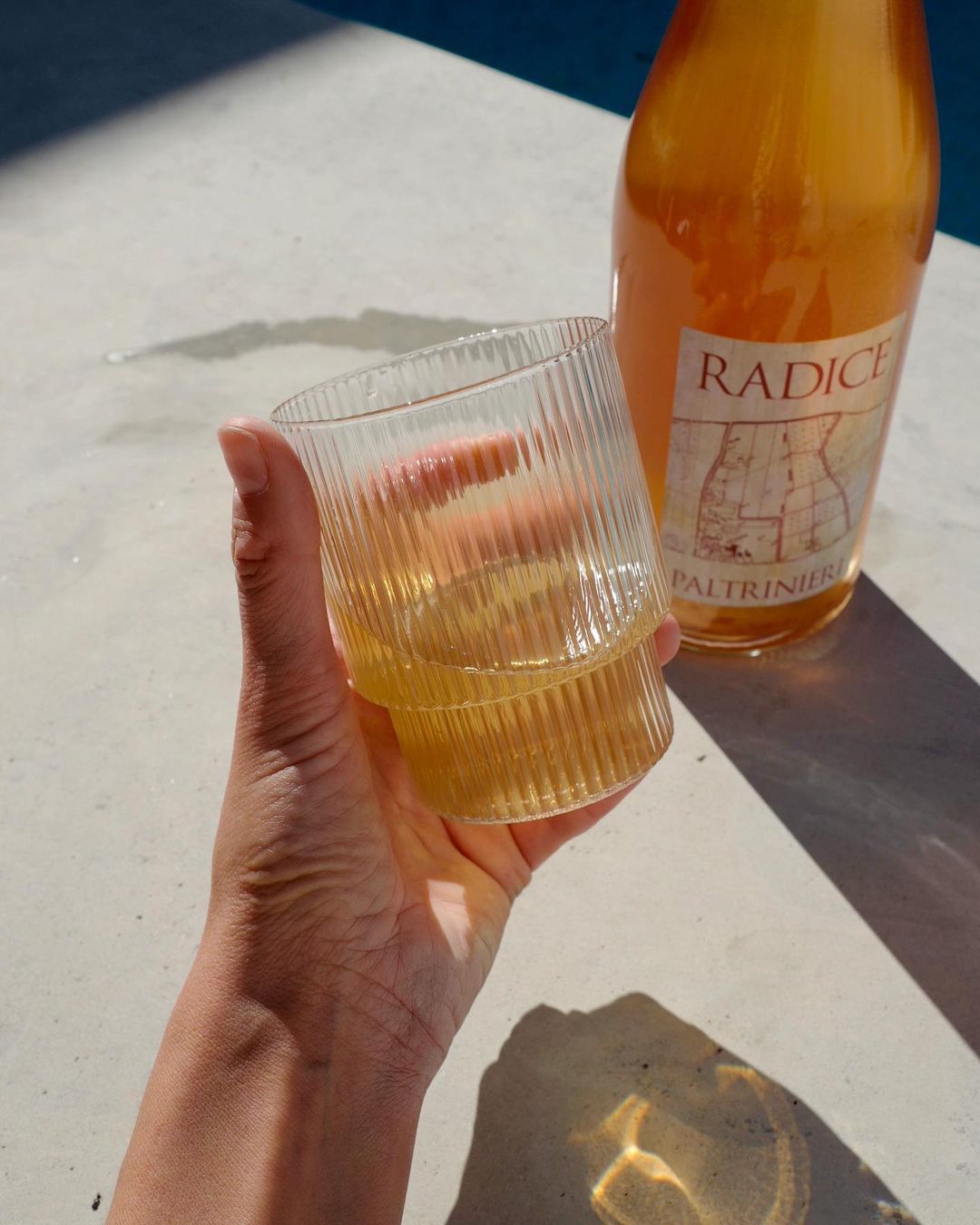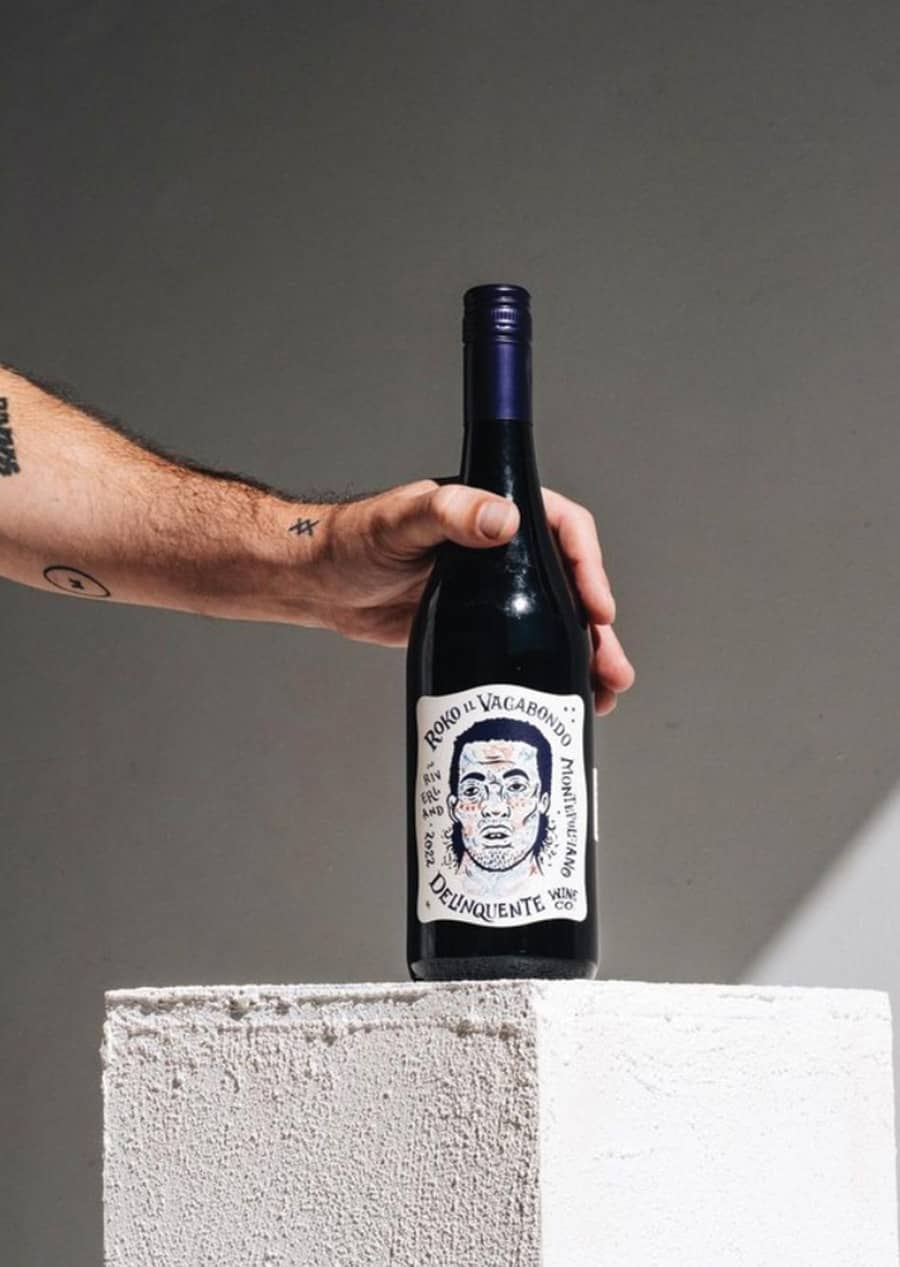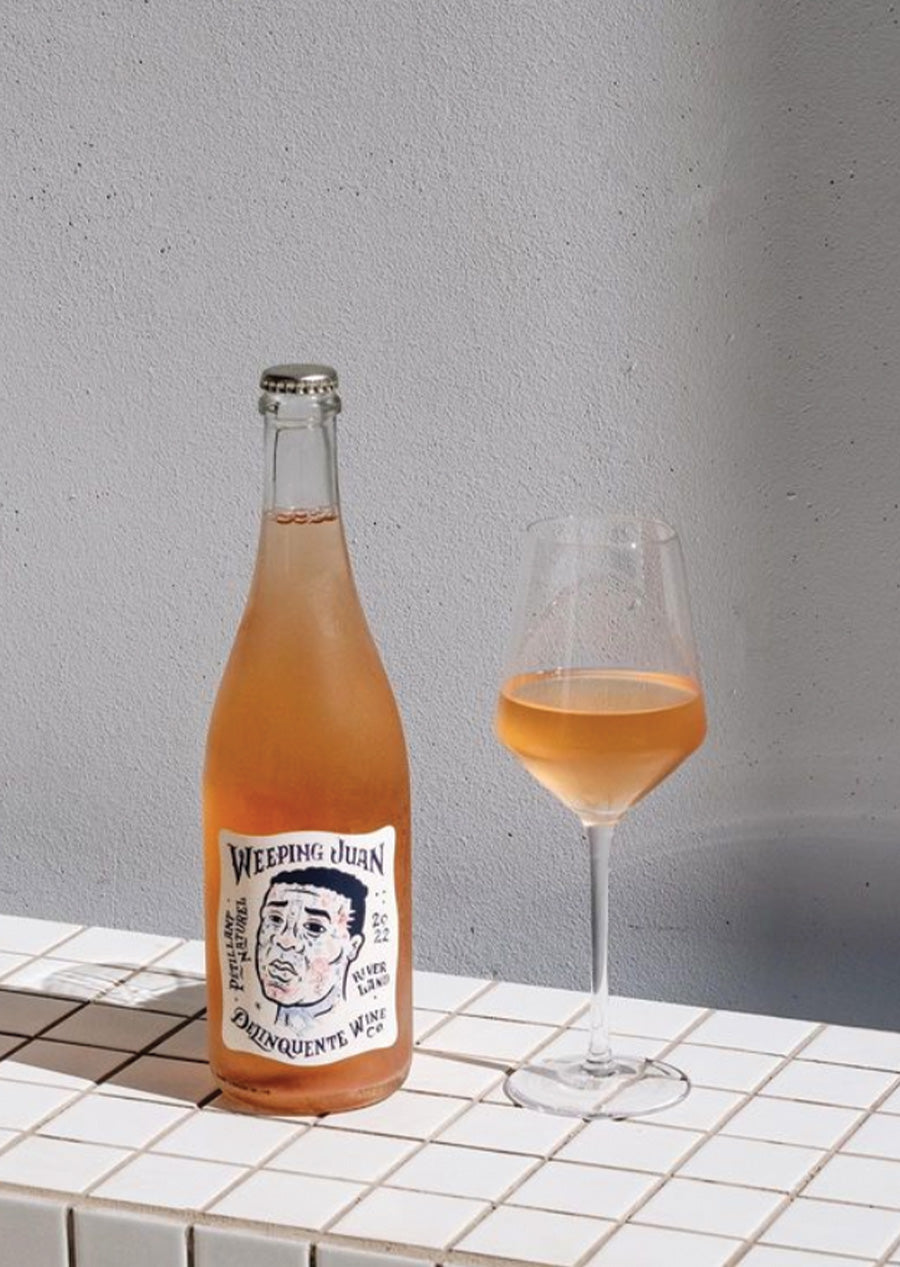-
-
-
-
-
Currency
food-drink
Winemakers Are Changing The Way They Make Their Drops For Climate Change


It’s Sunday night and you're about to sit down for a cosy dinner.
The menu is full of fresh, local farmers’ market produce. Your favourite recycled ceramic dinnerware is on the table. Before you place a reusable linen napkin on your lap, you fetch a special bottle of wine from the fridge to complete the scene. As you pour your glass, you pause to ask: does this wine reflect the rest of the table?
Determining the environmental impact of your favourite drop can be a tricky task. There are plenty of factors to consider: what were the carbon emissions involved in production? Was the wine farmed organically? How much waste was created?
A new generation of winemakers are asking (and answering) the same questions in an effort to revolutionise the industry and redefine what it means to drink green.

Documented By: @notwasted__
Understanding wine's impact on the environment
To fully appreciate the ingenuity of these new makers, it’s important to understand the historic impact of wine growing on the environment. Most mass-produced wines (which make up the bulk of the market) are still farmed industrially, with the use of machine harvesting causing direct emissions and associated indirect emissions (i.e. fuel production and machinery production).
Non-organic vineyards also rely heavily on synthetic fertilisers which release nitrous oxide, a chemical compound that’s almost 300 times more harmful to the climate than carbon dioxide. These fertilisers, alongside pesticides and fungicides to manage pests, result in soil degradation and water pollution.
Understanding the environment’s impact on wine
Climate change has the potential to impact countless parts of our lives, including our favourite vino. Despite there being over 1,000 varieties of grapes in existence, we only use around 12 to make our most popular wines. Relying on such a small selection makes the industry vulnerable to disruption from climate change. According to a study by Nature Climate Change, as fine-wine production regions warm up, they run the risk of becoming too hot to produce premium varieties.
Additionally, erratic weather events such as freak hailstorms, floods, spring frosts and forest fires can have dire effects on how the grapes ripen. As a result we could see a major drop in grape (and wine) availability over the next 50 years.

Documented By: @delinquentewineco
How winegrowers are changing their practices for a brighter (and greener) future
Yes, this is all concerning news for wine lovers. But there is actually a lot to be hopeful about as wine producers adapt and even thrive. We’re already seeing an increase in natural, organic and biodynamic wines. By 2025 the global organic wine market is projected to grow at a compound annual growth rate of around 12 per cent and surpass $15 billion in value. You don’t need to be an economist to spot the trend. Anyone who has been to a cool wine bar or bottle shop lately would have witnessed the unstoppable rise of pet nat (champagne’s cooler cousin).
Pet nat is short for the French pétillant naturel – meaning “naturally sparkling”. It is often produced by organic winemakers using traditional methods: bottling during initial fermentation and using the sugars from the grapes to provide the bubbles. One pet nat we’re particularly fond of is from South Australian brand Delinquente, which is a great example of aligning taste and climate values. In a region built on a reputation for bulk wine production and conventional farming, they have taken a long-term, environmentally friendly approach. They use organically grown southern Italian grape varieties that need less water and are suited to warmer climates and soil.
It’s worth pausing for a second to clarify what we mean by “organic”. Organic indicates that no artificial chemical fertilisers or pesticides have been used during production. With no synthetics, organic farming helps improve soil structure, retain moisture and sequester carbon (like a vacuum sucking in excess emissions).
Biodynamic vineyards take things one step further – they’re about nurturing the soil and treating the vineyard as one big living organism. Domaine Anderson, located in California’s Anderson valley, makes some of the finest Burgundy-inspired pinot noir and chardonnay in the country by following strict biodynamic principles. The vineyard integrates crops and livestock into its farming lifestyle, uses recycled nutrients and follows the lunar phases to guide the timing of pruning and harvesting.
Of course, no matter how the wine is made production will always create waste. Grape marc (the solid remains of grapes after pressing for juice) is the biggest food loss stream in Australian horticulture. Mechanical engineering academic Dr Heena Panchasara is working on a large-scale solution to this by exploring how wine waste can be turned into biofuel. The hope is to use the seeds, stems and skins to help power a cleaner future, potentially even creating circular fuel solutions for wineries to power their machinery without the carbon impact of petrol vehicles.
Though biofuel provides a hopeful taste of what’s to come, wineries are already starting to decrease their emissions in other ways. Award-winning coastal vineyard Yealands Wine Group, located in the Awatere Valley, is the first winery in New Zealand to be certified carbon zero from inception – with the whole estate run on sun and wind power. Yealands is home to one of the largest solar power installations in New Zealand and has even introduced electric vehicle charging stations for staff and visitors.
With countless wineries calculating their impact and putting the environment first, you no longer have to choose between your taste and the planet at your next intimate Sunday dinner. Here are some of our favourite wines that nature will appreciate as much as you.

Documented By: @delinquentewineco
Five wines from wineries with a green (and growing) future
2021 Delinquente Wine Co. “Pretty Boy” Nero d’Avola Rosato
Delinquente says this nero d’avola embodies “lush strawberries and cream on the nose and a super refreshing raspberry and rose water on the front palette.” But it’s the savoury notes that make this wine so notable – it’s both herbaceous and moreish!
2020 Yealands Estate Single Vineyard Sauvignon Blanc
This sauvignon blanc has won numerous awards, boasting intense flavours of lime, blackcurrant lead, passionfruit and fresh herbs. It’s layered with bright green citrus notes for a textured and elegant palette.
2019 Paltrinieri Lambrusco Di Sorbara “Radice”
Full of flavour and bubbles, this rustic wine reveals a delicate mix of cherries, cranberries, grapefruit and watermelon for a dry and crisp flavour.
This rosé is an uncommon Bordeaux blend of cabernet sauvignon, cabernet franc, merlot, and sauvignon blanc. It’s an interesting mix perfect for a hot day. Added bonus – it comes in a recycle-friendly can!
2020 Xavier Goodridge 'Papa' Pinot Noir
This pinot noir is for those who love a strawberry explosion. With intense red cherry and a subtle hint of black pepper, it’s light and juicy enough to be the perfect summer concoction.

ABOUT US
CUSTOMER CARE
EDITORIAL & RIISE PRODUCTIONS
© 2021 RIISE, All Rights Reservedjoin riise's mailing list for 10% off your first order.Availability








